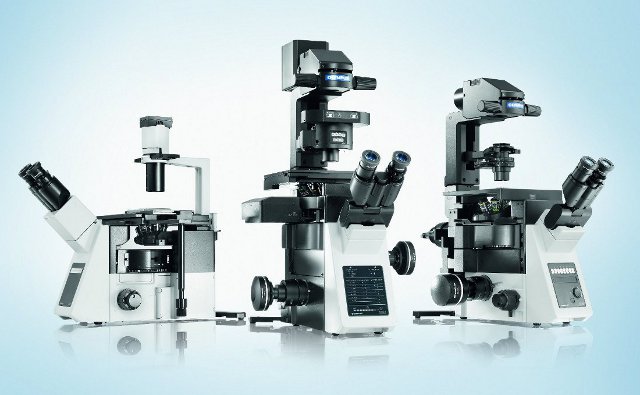Sep 24 2012
Olympus has released the innovative new IX3 series of inverted research microscope systems for effortless, intuitive live cell imaging and clinical analysis. This includes the fully automated IX83 for high-end research applications, the flexible IX73, which can be configured in manual, semi-motorised or motorised modes, and the easy-to-use IX53 with fluorescent capabilities, which is optimised for the routine examination of tissue samples.
Built using worldwide customer feedback and designed to meet the needs of a wide range of users, the new systems offer exceptional ease-of-use and unprecedented optical flexibility via a new, customisable light path. New components can be easily slid into the light path using a series of swappable decks. This opens up many new avenues for exploration, allowing researchers to follow their imaginations. The new systems also utilise the latest Olympus innovations in frame design, optics and software, providing exceptional stability, optical quality, accuracy and reliability.
The new IX3 inverted microscope systems are optimised for live cell imaging. In particular, the IX73 and IX83 are built using a new swappable deck design, which allows optical modules to be easily and rapidly slipped in and out as needed, including magnification changers, filter turrets, a right side port and more. This means that the systems are truly ‘open access’ and can be fully customised to meet the requirements of a wide range of applications, even allowing the utilisation of user-designed custom modules to provide the ultimate level of flexibility. This design also allows the systems to grow alongside the evolving demands of your life science research projects. This is especially true of the IX73, which is highly configurable and capable of integrating with a range of computer-coded or motorised components.
The new frame design of the IX3 systems provides an excellent level of mechanical and thermal stability, and includes an ultrasonic motorised stage for quiet, smooth and precise movement. Olympus UIS2 optics deliver sharp, bright images, while the proprietary Olympus fly-eye fluorescence illuminator generates even, vivid illumination across the specimen. This provides a much wider field of view than previously possible, with even illumination that fills the detectors of most cameras, even those with larger chips. IX3 systems are also compatible with the Olympus Real-Time Controller, offering high-precision imaging via microsecond synchronisation for advanced studies using high-speed light sources and triggered cameras.
Optimised for ease-of-use, the IX3 systems also help streamline complex imaging and measurement tasks. The systems integrate seamlessly with the powerful Olympus cellSens imaging software to allow advanced analysis at the click of a button, while the IX83 also offers a touch-panel interface that can be located in the most ergonomic position for each user, providing simple, quick and comfortable operation. With live cell imaging in mind, the IX83 is also compatible with the new Olympus ZDC Z-Drift Compensation system, which automatically ensures that every image you capture is in perfect focus. In particular, the ZDC can work independently of software control, and uniquely combines a one-shot and continuous mode in the same unit, ensuring your system can be easily optimised for a wide range of different applications.
 Olympus IX3 inverted microscope family
Olympus IX3 inverted microscope family